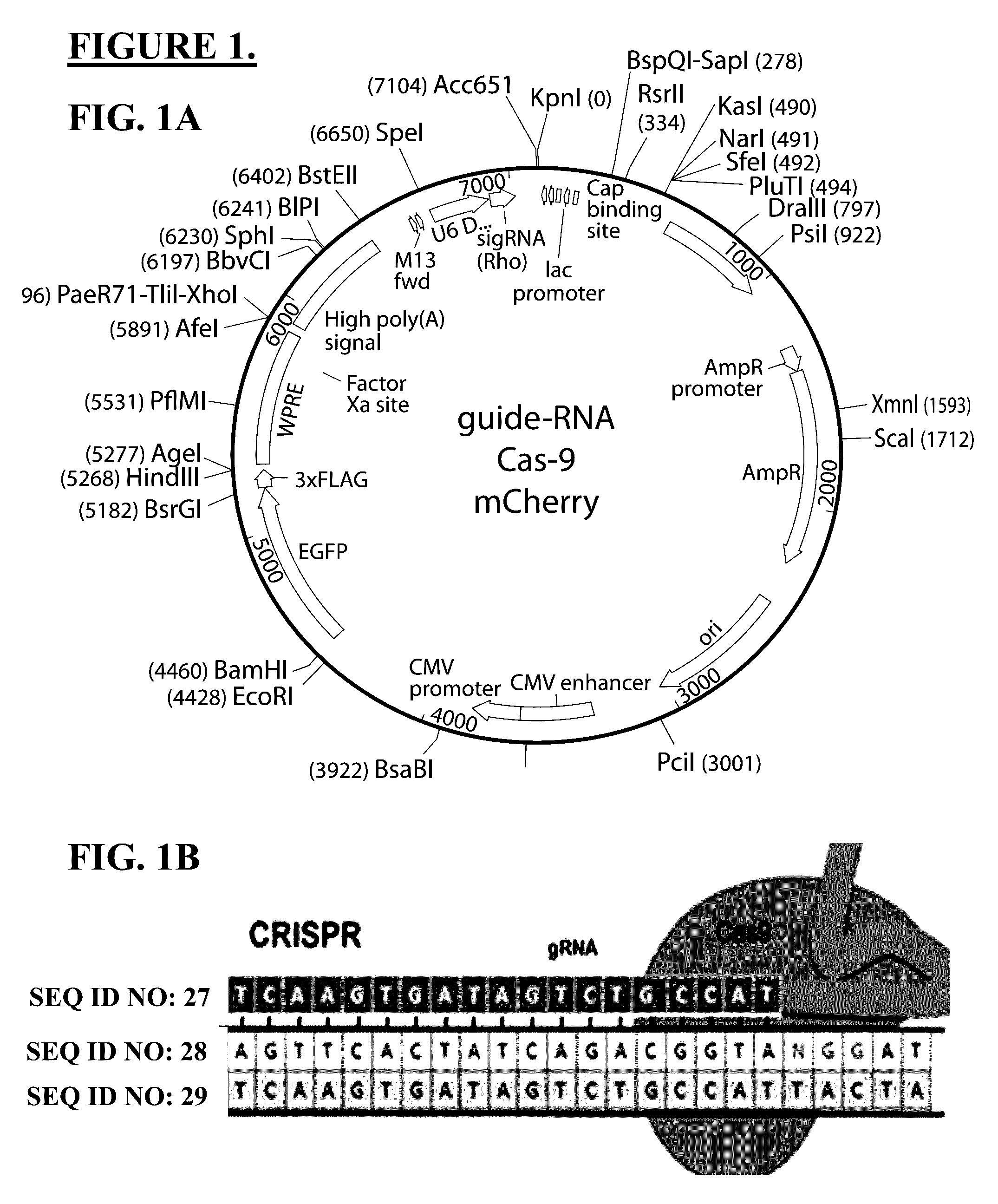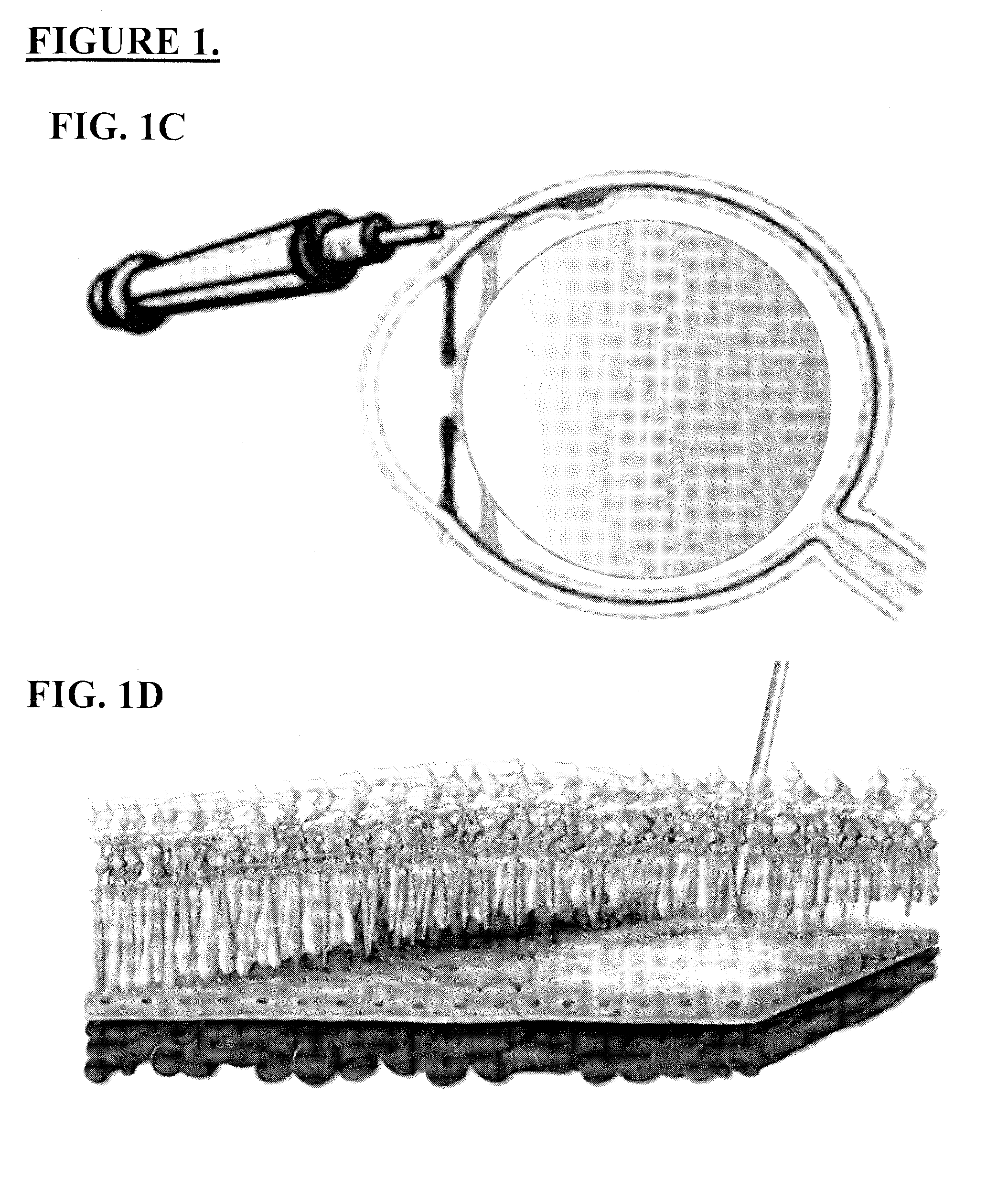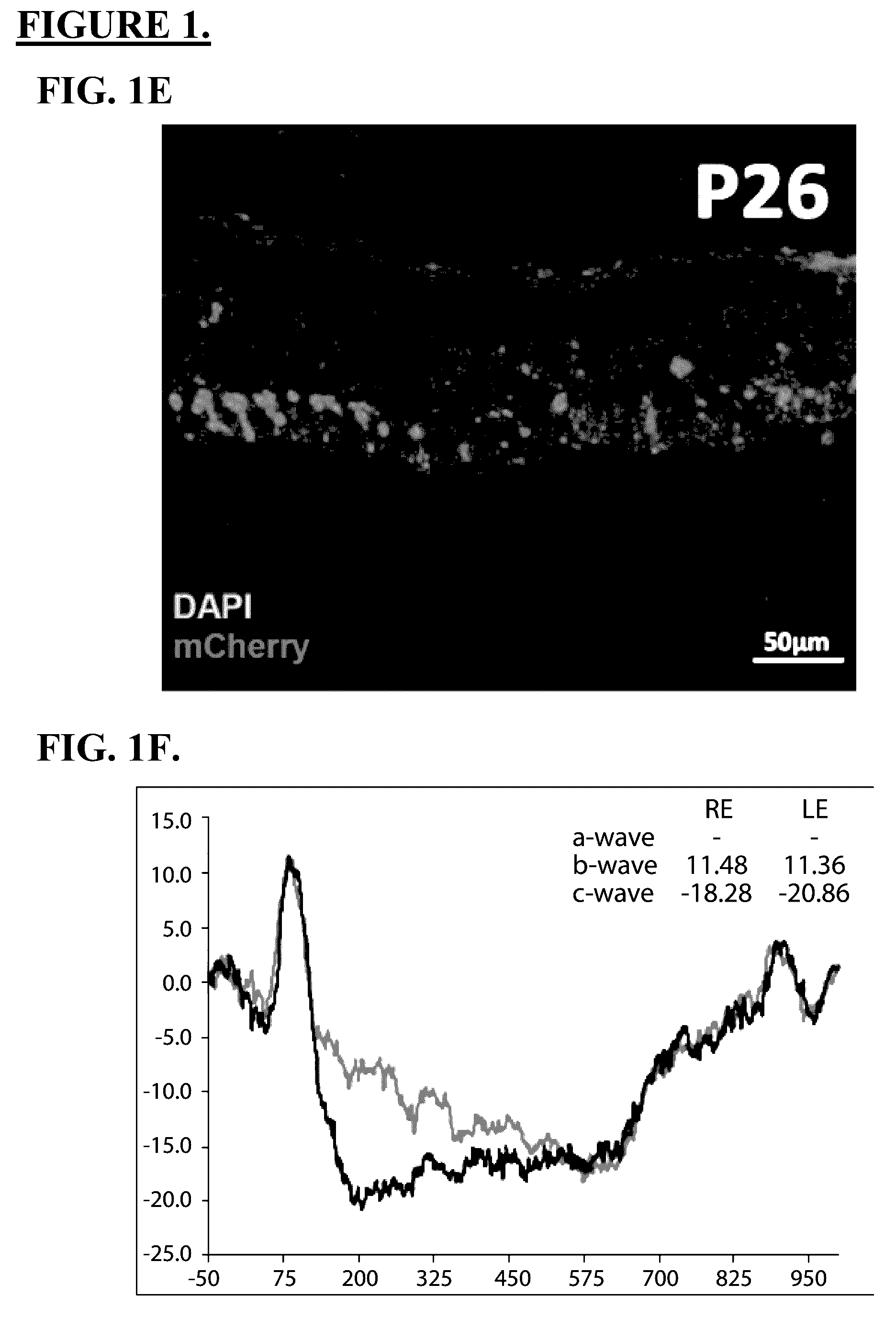Use of crispr/cas9 as in vivo gene therapy to generate targeted genomic disruptions in genes bearing dominant mutations for retinitis pigmentosa
a technology of retinitis pigmentosa and genomic disruption, which is applied in the field of in vivo gene therapy of crispr/cas9 to generate targeted genomic disruption, can solve the problems of progressive “tunnel vision” and blindness, severe vision impairment and blindness,
- Summary
- Abstract
- Description
- Claims
- Application Information
AI Technical Summary
Benefits of technology
Problems solved by technology
Method used
Image
Examples
example 1
[0054]The S334ter-line-3 rat is a transgenic model of retinal degeneration developed to express a rhodopsin mutation similar to that found in human retinitis pigmentosa (RP) patients. The S334ter-line-3 rat possess a mouse rhodopsin (RHO) gene bearing a termination codon at residue 334, which results in a C-terminal truncated RHO protein lacking the last 15 amino acid residues that is not trafficked to the outer segments. Heterozygous rats of the S334ter line-3 exhibit fast degeneration and due to the truncated rhodopsin sequestration, and never develop rod photoreceptor outer segments. Retinal degeneration occurs in the mean outer nuclear layer (ONL), and superior hemisphere is slightly more degenerated than the inferior hemisphere. S334ter-line-3 model also exhibits the hallmarks of cellular remodeling caused by photoreceptor degeneration including abnormal processes of bipolar cells, lower density of biopolar cells, and glial reactivity.
example 2
CRISPR / Cas9 Constructs, Generally
[0055]The CRISPR associated protein cas9 is utilized to induce double-stranded DNA break at the mutant RHO in S334ter-line-3, with the DNA break repaired so as to prevent expression of the aberrant mutant rhodopsin by missense or nonsense mutation, thereby preventing toxic buildup of abberant protein normally causing cellular retinal degeneration as repaired by nonhomologous end-joining (NHEJ).
[0056]Utilizing this mechanism, CRISPR is especially promising for targeting gain-of-function mutations in which silencing of the mutated allele is sufficient to preserve the cell. Using Cas9, the sequence of the gene could be disrupted in a way that would prevent translation of that allele. Alternatively, homologous directed repair (HDR) could be used to incorporate a template sequence to correct a genetic mutation, such as normal wild-type RHO. In addition to targeted disruption (ablation) of a dominant allele, and targeted insertion by HDR, one could target ...
example 3
CRISPR / Cas9 Constructs, Specifically
[0057]The design for the gRNA is to knockout the mutation type of rhodopsin gene-Rho S334 and maintains the integrity of the wild type rat RHO gene. Since CRISPR / Cas9 mediated high efficiency genome editing relies on the protospacer-adjacent motif (PAM) sequence NGG, a specific gRNA was designed. The gRNA cooperation with Cas9 has high efficiency of cleavage only in mouse RHO S334 mutation gene, not in rat wild type RHO (which is lack of PAM sequence). In addition, the gRNA sequence also contains one base mismatch compared with rat wild type Rho gene locus, which further ensured the specificity of targeting mutation gene. The gRNA Cas9 targeting site is on the first exon of RHO S334 gene. Upon cleavage by Cas9, the Rho S334 locus typically undergoes NHEJ or HR for repairing DNA damage. NHEJ can be harnessed to mediate gene knockouts, as indel occurring within a coding exon can lead to frameshift mutation and premature stop codon.
PUM
| Property | Measurement | Unit |
|---|---|---|
| thick | aaaaa | aaaaa |
| electrical functional | aaaaa | aaaaa |
| area | aaaaa | aaaaa |
Abstract
Description
Claims
Application Information
 Login to View More
Login to View More - R&D
- Intellectual Property
- Life Sciences
- Materials
- Tech Scout
- Unparalleled Data Quality
- Higher Quality Content
- 60% Fewer Hallucinations
Browse by: Latest US Patents, China's latest patents, Technical Efficacy Thesaurus, Application Domain, Technology Topic, Popular Technical Reports.
© 2025 PatSnap. All rights reserved.Legal|Privacy policy|Modern Slavery Act Transparency Statement|Sitemap|About US| Contact US: help@patsnap.com



